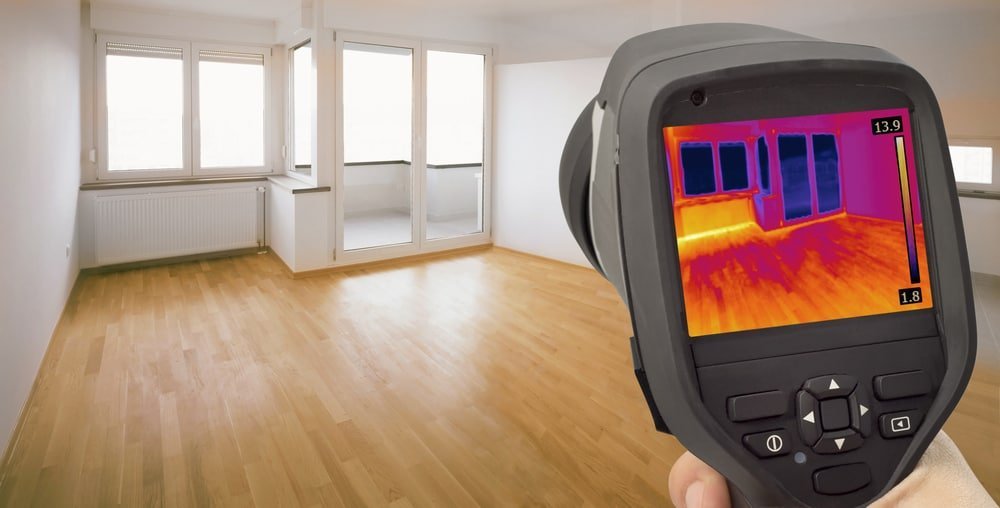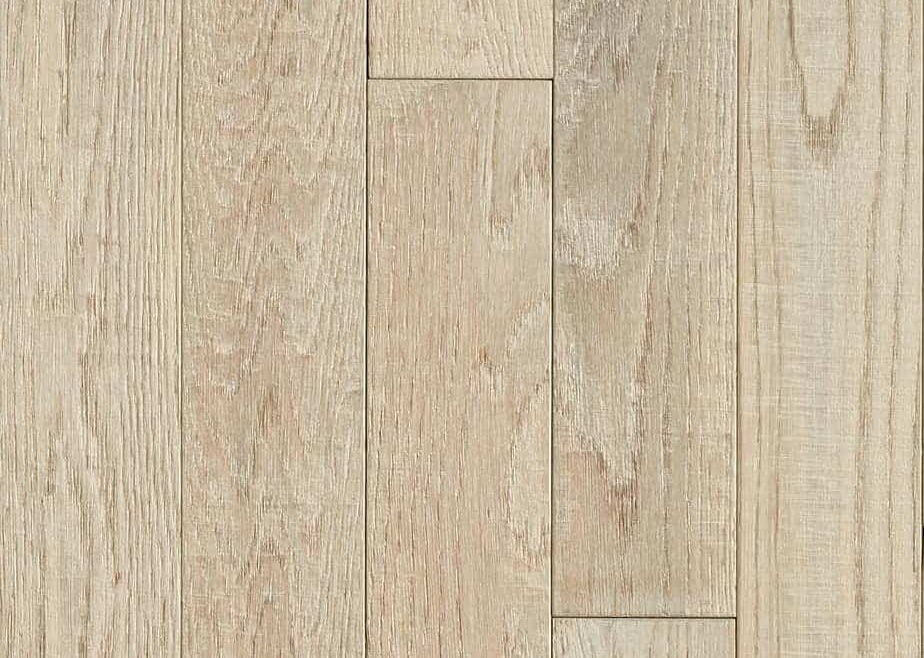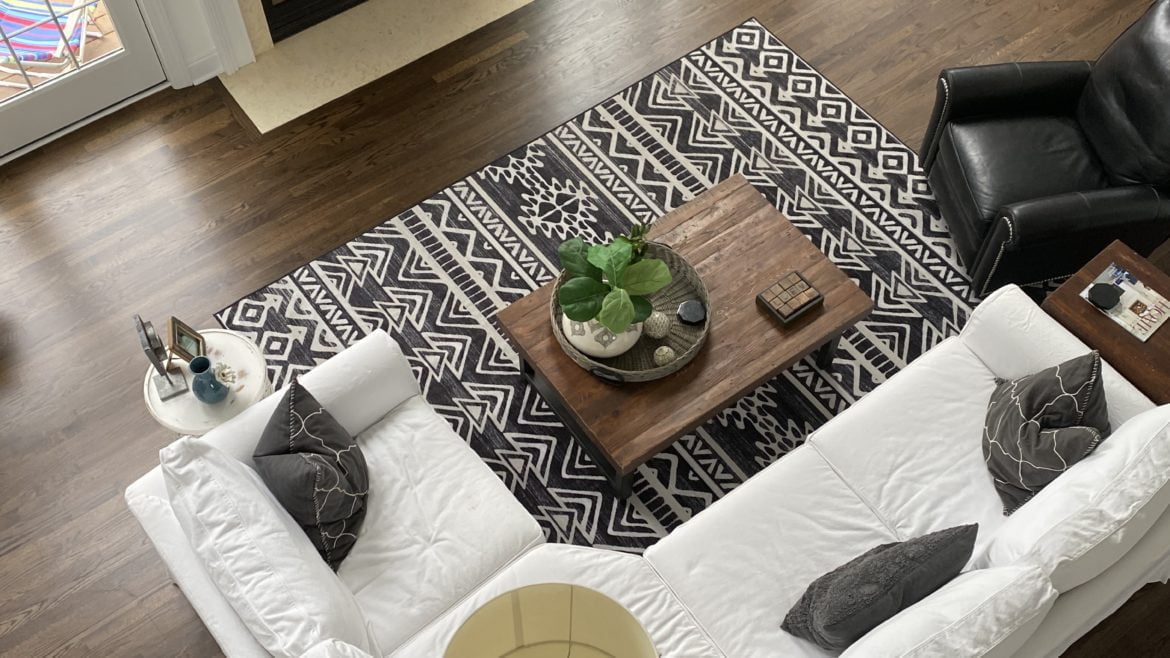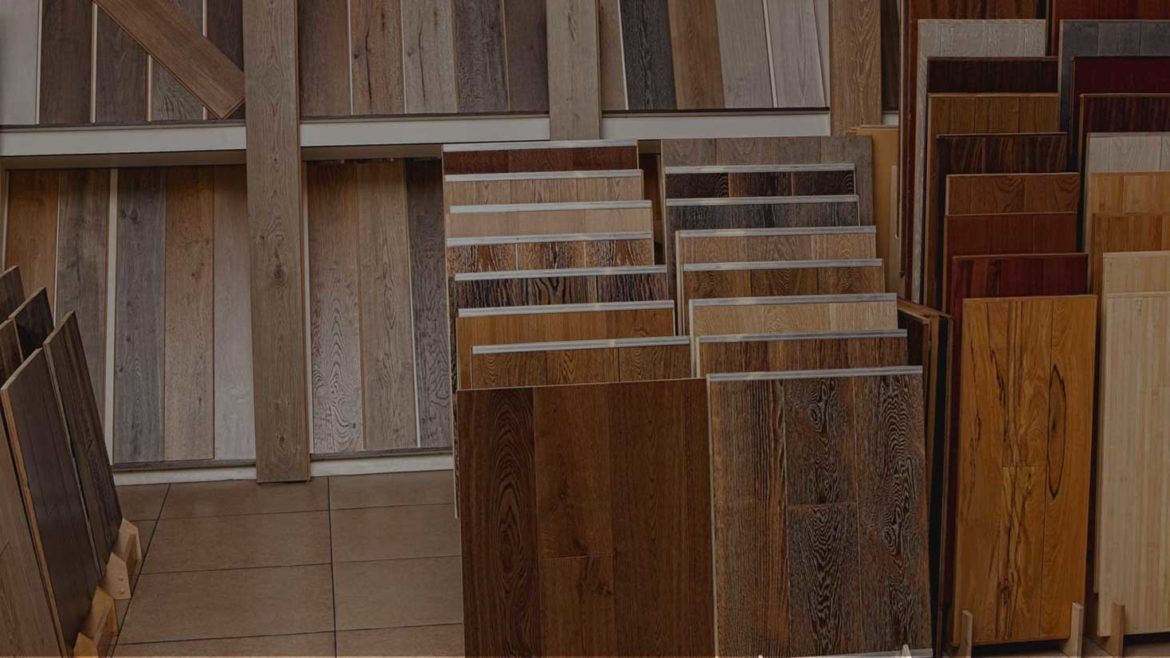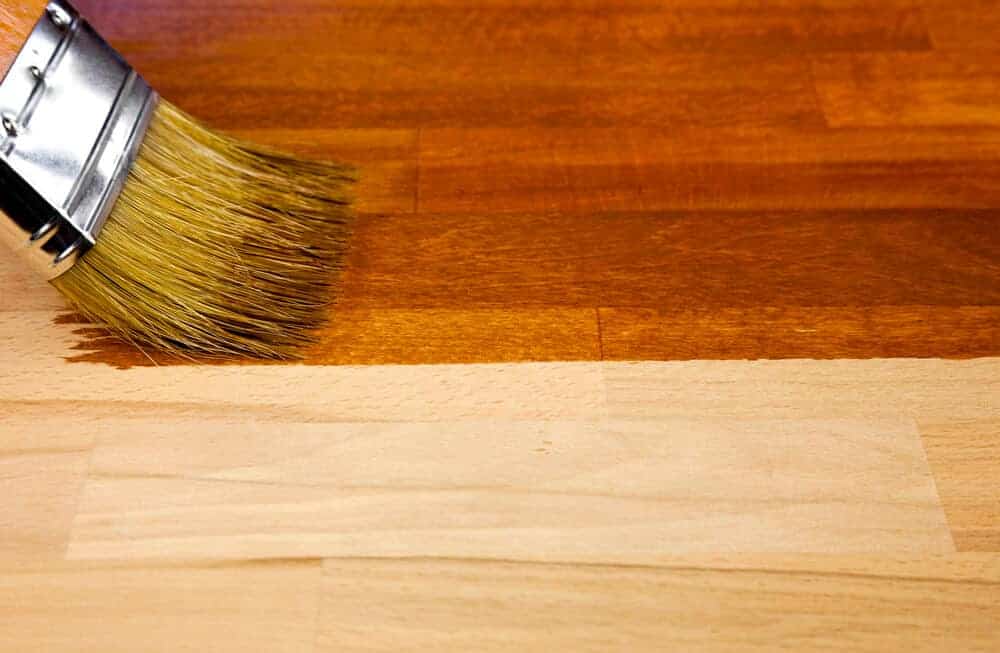When it comes to the floors in our homes, hardwood is often considered the gold standard. However, over time, even the most durable hardwood floors can start to show signs of wear and tear. This then leads you to the question, “should I replace old hardwood floors?”
Replacing old wood floors is a big decision that requires careful consideration. In this article, we will explore the signs that indicate it may be time for an upgrade, as well as the benefits of replacing old hardwood floors. Whether you’re dealing with visible wear and tear, water damage, or squeaky floors, we will provide helpful information to help you make an informed decision.
From assessing the value and style of new hardwood floors to understanding the replacement process, we will guide you every step of the way. We will also discuss the importance of hiring professionals and the different hardwood flooring options available. Additionally, we will provide tips on maintaining and caring for your new hardwood floors.
By the end of this article, you will have a clear understanding of whether or not you should replace your old hardwood floors and the steps involved in the replacement process.
Key Takeaways:
- Replacing old hardwood floors can greatly enhance the value and style of your home.
- Signs that indicate it may be time to replace your hardwood floors include visible wear and tear, water damage, squeaks, and gaps between planks.
- Consider factors such as the age and overall condition of your floors when deciding whether to replace them.
- Hiring professionals for hardwood floor replacement is essential for a successful and efficient installation.
- There are various types of hardwood flooring options available, including different wood species, finishes, and styles.
Signs of Needing New Wood Floors
If you’re wondering whether it’s time to replace your hardwood floors, there are several telltale signs that indicate they may be in need of renovation. By recognizing these signs early on, you can take the necessary steps to restore the beauty and functionality of your floors. Here are some common indicators that it might be time for new wood floors:
1. Visible Wear and Tear
Over time, hardwood floors naturally show signs of wear and tear. This can include scratches, dents, and discoloration. If your floors have become noticeably damaged and no longer have that sleek, polished appearance, it may be a sign that it’s time to consider a replacement.
2. Water Damage
Water damage is a serious issue that can compromise the integrity of your hardwood floors. If you notice swelling, warping, or buckling of the wood, it could be a clear indication of water damage. This can be caused by leaks, spills, or high levels of humidity. Addressing water damage promptly is crucial to prevent further issues and restore the beauty of your floors.
3. Squeaking Floors
If you find yourself constantly hearing squeaks and creaks as you walk across your hardwood floors, it could be a sign of underlying problems. Squeaks typically occur as a result of loose floorboards or gaps between the planks. While these issues can sometimes be fixed with repairs, persistent squeaking may signal that it’s time for a more substantial renovation.
4. Gaps Between Planks
A noticeable gap between the planks of your hardwood floors is not only unsightly but can also be a sign of structural issues. Over time, wood naturally expands and contracts due to changes in temperature and humidity. However, excessive gaps between the planks indicate a more serious problem that may require the replacement of the entire floor.
Considerations for Hardwood Floor Replacement
When it comes to replacing your hardwood floors, there are several important factors to consider. Taking the time to assess the age of your floors, their overall condition, and the potential for restoration or upgrading can help you make an informed decision.
Age of the Floors: The age of your hardwood floors plays a significant role in determining whether replacement is necessary. Over time, wood can become worn, scratched, and damaged, impacting its functionality and aesthetic appeal.
Overall Condition: Evaluate the overall condition of your hardwood floors. If you notice extensive water damage, significant gaps between planks, or excessive squeaking, it may be a clear sign that replacement is needed.
Potential for Restoration or Upgrading: In some cases, restoration or upgrading may be a viable alternative to complete replacement. If your hardwood floors have minor issues such as scratches or minor stains, they may be suitable candidates for refinishing or restoration.
Ultimately, the decision to replace your hardwood floors depends on a combination of these factors. When in doubt, consult with a professional who can assess the condition of your floors and provide expert guidance on the best course of action.
Assessing the Value and Style of New Hardwood Floors
Upgrading your hardwood floors can bring numerous benefits in terms of both value and style. When considering the best time to replace wood floors, it’s important to take into account the potential increase in your home’s aesthetic appeal and market value.
The cost to replace hardwood flooring may be a concern, but the long-term advantages often outweigh the initial investment. New hardwood floors can transform the look and feel of your home, creating a more modern and stylish atmosphere.
Enhanced Aesthetic Appeal
One of the main benefits of installing new hardwood floors is the enhanced aesthetic appeal they bring to your home. With a wide range of colors, finishes, and textures available, you can choose the perfect flooring to complement your interior design style.
Whether you prefer a classic, traditional look or a more contemporary, minimalist aesthetic, there is a hardwood flooring option that will suit your taste. The clean and timeless beauty of hardwood floors can create a sense of elegance and sophistication in any room.
Increased Market Value
Another important factor to consider when weighing the cost to replace hardwood flooring is the potential increase in your home’s market value. High-quality hardwood floors are highly sought after by potential buyers as they are seen as a premium feature.
New hardwood floors can make your home more attractive to buyers, giving you a competitive edge in the real estate market. The investment you make in replacing your old wood floors can pay off when it comes time to sell your property.
In addition, new hardwood floors are durable and long-lasting, which can be an appealing feature for prospective buyers. They are also easy to maintain and keep clean, making them a practical choice for homeowners.
When considering the best time to replace wood floors, it’s important to weigh the long-term benefits against the initial cost. By upgrading your hardwood floors, you can enhance the visual appeal of your home and potentially increase its market value.
Hiring Professionals for Hardwood Floor Replacement
When it comes to hardwood floor replacement, hiring professionals is crucial to ensure a successful and efficient process. Professionals bring expertise and experience that can make a significant difference in the outcome of your project.
One of the key benefits of professional installation is the assurance of quality workmanship. Replacing hardwood floors requires precision and skill to ensure proper alignment, seamless transitions, and a finished result that meets your expectations. Expert installers have the knowledge and tools to handle any challenges that may arise during the replacement process.
Additionally, professional installation can save you time and effort. They have the necessary resources to complete the job efficiently, allowing you to enjoy your new hardwood floors sooner. Attempting a DIY hardwood floor replacement can be time-consuming and may lead to subpar results if not done correctly.
Moreover, reputable contractors often offer warranties on their work, providing you with added peace of mind. If any issues arise after the replacement, you can rely on their expertise to address and resolve them effectively.
Finding Reputable Contractors for Hardwood Floor Replacement
When searching for contractors to replace your hardwood floors, it’s important to do your due diligence. Here are a few key steps to find reputable professionals:
- Seek recommendations from friends, family, or neighbors who have had their hardwood floors replaced. Personal referrals often provide valuable insights and firsthand experiences.
- Research online and read reviews from reputable platforms. Look for consistent positive feedback, particularly regarding their expertise, professionalism, and attention to detail.
- Contact multiple contractors and request estimates. This will not only give you an idea of the cost but also allow you to gauge their responsiveness and willingness to answer your questions.
- Verify the contractor’s license and insurance. A reputable professional will have the necessary credentials and insurance coverage to protect both parties in case of any accidents or damages during the replacement process.
- Ask for references and don’t hesitate to reach out to previous clients. Speaking with those who have worked with the contractor in the past can provide valuable insights into their work ethics and the overall satisfaction of their customers.
By following these steps and taking the time to find reputable contractors, you can ensure a smooth and successful hardwood floor replacement project. Remember, investing in professional installation not only enhances the beauty of your home but also ensures the longevity and durability of your new hardwood floors.
Types of Hardwood Flooring Options
When considering hardwood floor replacement, it’s important to explore the wide range of options available. From different species of wood to various finishes and styles, understanding the different types of hardwood flooring will help you make an informed decision for your home.
Species of Wood
One of the first considerations when choosing hardwood flooring is the species of wood. Different species offer unique characteristics and aesthetics. Common options include oak, maple, cherry, and walnut. Each species has its distinct grain pattern, color variations, and durability, allowing you to select the one that complements your style and preferences.
Finishes
Hardwood floors can be finished in different ways, which not only impacts their appearance but also their durability. Common finishes include oil-based finishes, water-based finishes, and UV-cured finishes. Oil-based finishes offer a more traditional look with a warm and amber hue. Water-based finishes provide a clear finish that maintains the natural color of the wood. UV-cured finishes offer excellent durability and faster curing times, making them a popular choice for high-traffic areas.
Styles
In addition to the species of wood and finishes, hardwood floors come in various styles that can enhance the aesthetic appeal of your home. Some popular styles include traditional smooth planks, hand-scraped planks for a rustic look, wire-brushed or distressed planks for a vintage appearance, and wide or narrow planks to create different visual effects. The style you choose will ultimately depend on your personal taste and the overall design of your home.
By considering the species of wood, finishes, and styles available, you can select the hardwood flooring options that best suit your needs and preferences for replacing your old hardwood floors.
Preparing for Hardwood Floor Replacement
When it comes to hardwood floor replacement, proper preparation is key to ensuring a smooth and successful installation process. By taking the necessary steps before the replacement begins, you can help minimize disruptions and maximize the longevity of your new floors. Here are some tips to help you prepare your home for hardwood floor replacement:
Clearing Out Furniture
Prior to the start of the replacement project, it is important to clear out all furniture and belongings from the area where the new hardwood floors will be installed. This includes removing rugs, drapes, and any other objects that could obstruct the installation process. By creating an open and empty space, the installation team can work efficiently and without any unnecessary hindrances.
Preparing Subfloors
Before the installation of new hardwood floors can begin, it is essential to properly prepare the subfloors. This involves removing any existing flooring materials, such as carpet or laminate, and ensuring that the subfloor is clean, dry, and level. This will provide a stable and even surface for the new hardwood floors to be installed, preventing any potential issues down the line.
Ensuring Proper Ventilation
Proper ventilation is crucial during the hardwood floor replacement process. This helps to ensure that the area remains well-ventilated, allowing for the appropriate drying and curing of the adhesives and finishes. It is recommended to open windows and use fans to promote air circulation. This will not only aid in the drying process but also help minimize the smell associated with new flooring materials.
By following these tips and adequately preparing your home for hardwood floor replacement, you can help facilitate a smooth and efficient installation. Remember to consult with professionals for specific guidance and recommendations regarding the preparation process. With the right preparation, you can look forward to enjoying beautiful and durable hardwood floors in your home.
Understanding the Hardwood Floor Replacement Process
Replacing old hardwood floors involves a step-by-step process that ensures a smooth and successful installation. In this section, we will guide you through each stage, from the removal of old floors to the final installation, allowing you to understand what to expect and make informed decisions along the way.
The Removal of Old Floors
The first step in the hardwood floor replacement process is removing the existing old floors. This involves carefully prying up each plank or section, taking caution not to damage the subfloor. If the old floors are damaged or glued down, additional techniques may be required, such as sanding or cutting to remove them completely.
During this process, it’s crucial to ensure the subfloor is clean, level, and free from any debris or moisture that could affect the new floor’s stability and longevity. Any necessary repairs or adjustments should be made at this stage.
Installation Techniques
Once the old floors have been removed and the subfloor is prepared, the new hardwood floors can be installed. There are various installation techniques available, including nail-down, staple-down, and floating methods.
The nail-down method involves using nails to secure each hardwood plank directly to the subfloor. The staple-down method uses staples instead of nails, providing a secure and efficient installation. The floating method, on the other hand, involves interlocking the planks and placing them over a foam underlayment, allowing for greater flexibility and ease of installation.
The installation technique you choose may depend on factors such as the type of hardwood flooring, subfloor conditions, and personal preferences. Consulting with a professional can help you determine the best approach for your specific needs.
Timeline for Completion
The timeline for completing a hardwood floor replacement project can vary based on several factors, including the size of the area, the complexity of the installation, and any additional preparations or repairs required.
On average, a hardwood floor replacement project can take anywhere from a few days to a couple of weeks. It’s important to consider this timeframe when planning the project, as it may impact the accessibility and functionality of the space being worked on.
Working with experienced professionals who specialize in hardwood floor replacement can help ensure that the project stays on schedule and is completed efficiently.
By understanding the hardwood floor replacement process, you can confidently embark on your project, knowing what to expect at each stage. The removal of old floors, the installation techniques used, and the timeline for completion all play a vital role in achieving a successful and long-lasting result.
Maintaining and Caring for New Hardwood Floors
Once you have invested in new hardwood floors through replacement, it is essential to know how to properly maintain and care for floors to ensure their longevity and beauty. By following the right cleaning techniques, taking preventive measures to avoid damage, and implementing regular maintenance practices, you can keep your hardwood floors in optimal condition.
Cleaning Techniques
When it comes to cleaning your new hardwood floors, it is crucial to use appropriate techniques and avoid harsh chemicals that can cause damage. Start by regularly sweeping or vacuuming the floors to remove dirt and debris. Use a soft-bristle broom or a vacuum cleaner with a floor attachment that is suitable for hardwood floors.
For a deeper clean, lightly dampen a microfiber mop or cloth with a hardwood floor cleaner specifically designed for the type of finish on your floors. Avoid using excessive water or saturating the floors, as this can lead to warping or staining. Always follow the manufacturer’s instructions for the cleaning products you use.
Tips for Preventing Damage
To prevent damage to your new hardwood floors, consider implementing the following tips:
- Use furniture pads or felt protectors on the legs of chairs, tables, and other furniture to prevent scratches.
- Avoid wearing high heels or shoes with spikes or cleats on the floors.
- Place doormats at entryways to trap dirt and moisture before it reaches the floors.
- Wipe up spills immediately to prevent staining or warping.
- Use rugs or mats in high-traffic areas to minimize wear and tear.
Importance of Regular Maintenance
Regular maintenance is crucial for preserving the beauty and durability of your new hardwood floors. Follow these maintenance practices to keep your floors looking their best:
- Regularly dust and clean the floors to remove dirt and debris that can cause scratches or wear down the finish.
- Inspect the floors for any signs of damage, such as cracks, gaps, or loose boards, and address them promptly to prevent further issues.
- Consider refinishing the floors every few years to restore their appearance and protect them from wear.
- Keep indoor humidity levels between 30% and 50% to prevent the wood from expanding or contracting excessively.
- Avoid exposing the floors to direct sunlight for prolonged periods, as it can fade the wood.
By following these maintenance and care guidelines, you can enjoy your new hardwood floors for years to come while preserving their beauty and value.
Replacing Hardwood Floors in Different Areas of Your Home
When it comes to hardwood floor replacement, it’s essential to consider the unique considerations for each area of your home. Different rooms have distinct challenges and requirements, and understanding these factors is crucial for a successful replacement project.
Kitchen
In the kitchen, hardwood floors are exposed to high foot traffic, spills, and moisture. As a result, durability and water resistance are key considerations. Opting for engineered hardwood or solid wood species known for their water resistance, such as oak or bamboo, can be a wise choice. Additionally, applying a protective sealant is recommended to guard against potential water damage.
Bedroom
When replacing hardwood floors in bedrooms, comfort and aesthetic appeal are often top priorities. Consider softer wood species, such as maple or cherry, for a more cozy and warm feeling underfoot. Additionally, selecting a floor finish that minimizes noise and provides a cushioning effect, such as cork or vinyl, can enhance the overall comfort of your bedroom.
Living Room
The living room is a central gathering space that requires a combination of durability and style. Here, it’s crucial to choose hardwood flooring that can withstand heavy foot traffic and potentially withstand furniture movement. Popular options, such as oak or walnut, offer both durability and timeless beauty to elevate the aesthetics of your living room.
Remember, replacing hardwood floors in different areas of your home requires careful considerations based on the specific needs of each room. By choosing the right flooring material, finishes, and appropriate installation techniques, you can achieve a successful and long-lasting hardwood floor replacement project tailored to the unique requirements of each space.
Assessing the Return on Investment for Hardwood Floor Replacement
In this section, we will explore the potential return on investment for hardwood floor replacement. Upgrading your old hardwood floors can have a significant impact on the value of your home and attract potential buyers.
When considering hardwood floor replacement, it is important to understand that this decision goes beyond simply improving the aesthetics of your home. New hardwood floors can enhance the overall appeal and functionality of your living spaces, making it an attractive feature for prospective buyers.
Investing in new hardwood floors can offer a high return on investment, especially if your existing floors are outdated, worn, or damaged. Upgrading to modern, durable hardwood flooring can make your home more desirable in the real estate market, potentially increasing its value.
Buyers often appreciate the timeless beauty and durability of hardwood floors, considering them a valuable asset. This could give your home a competitive edge when it comes to selling it in the future.
Additionally, replacing your hardwood floors allows you to choose from a wide variety of styles, finishes, and wood species. With the right selection, you can create a visually appealing space that suits your personal taste and enhances the overall aesthetic of your home.
While hardwood floor replacement may require an upfront investment, the long-term benefits can outweigh the costs. It is essential to choose high-quality materials and hire professional contractors to ensure a successful installation that will stand the test of time.
Ultimately, by assessing the return on investment for hardwood floor replacement, you can make an informed decision that will not only improve the quality of your living spaces but also potentially increase the value of your home.
Conclusion
In conclusion, when pondering the question of whether to replace old hardwood floors, it’s essential to consider factors like the extent of damage, budget constraints, and personal preferences. While minor imperfections can often be remedied through refinishing, more significant issues may warrant replacement to ensure the longevity and beauty of your flooring.
When opting for replacement, partnering with a reputable hardwood flooring service like Tri Point Flooring can make all the difference. With their expertise, attention to detail, and commitment to customer satisfaction, Tri Point Flooring offers a seamless experience from consultation to installation, ensuring that your new floors not only enhance the aesthetic appeal of your home but also withstand the test of time. Contact us today to know more.













